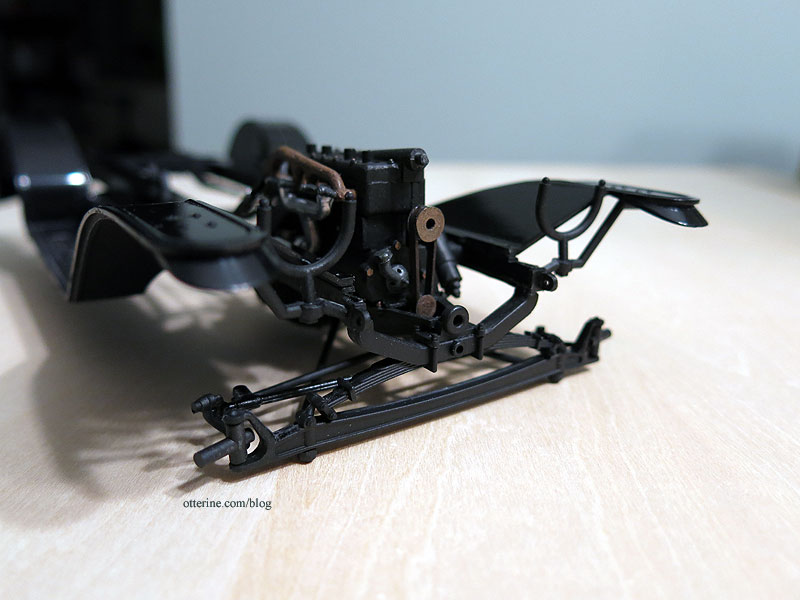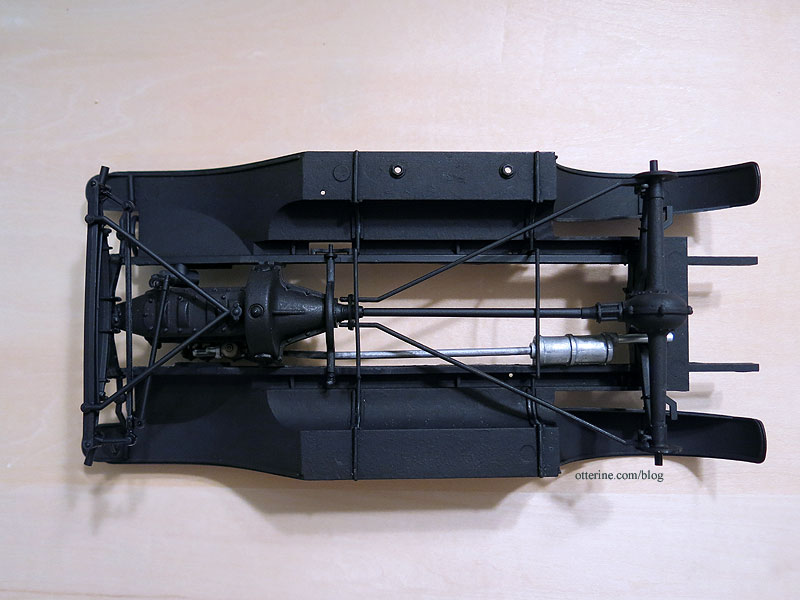Continuing work on the Model T Van. We’ve reached page two of the instructions! The frame has been attached to the fenders and the engine glued in place. This is all extremely fiddly after removing the stabilizing sprue connectors from the fender/chassis part. I was (am) concerned about the van sitting level on a surface, but maybe this setup will act like the original and make it conform to any surface? Fingers crossed. As a fix, I can always pack some serious ballast into the rear cabin.
As feared, I ended up getting super glue on the black fender paint even though I was trying to be so careful. It’s in a not-so-obvious spot and should be covered when the hood is in place so it’s not the worst that could have happened. I polished it as best I could.

Worded instructions and drawings get you only so far. Sometimes it is hard to tell how something is meant to be aligned and you won’t know you’ve done it wrong until a later part or assembly doesn’t fit. This was the case of hanging the engine in place. There are two brackets on either side that sit neatly into the frame.

My best guess is that the engine should be level based on viewing the real life autos and well, logic. But, there didn’t seem to be an attachment point for the front of the engine assembly that allowed for the engine to be level. Mounted too low in the front, and it rubbed against some moving parts, which didn’t seem right. Too high, and it was probable that the hood wouldn’t fit over it. I ended up shaving away a bit of plastic and then glued the engine in place so it was mostly level. I couldn’t shave any more plastic without causing issues, so let’s hope it works.

I mention moving parts as I think this contraption is meant to have working steering once I’m done. Considering the delicate nature of plastic parts, if I end up with a solid model with good suspension, I’ll consider myself successful. Anything beyond that will be gravy. It’s looking good so far, though.

And, here’s the underside.







































